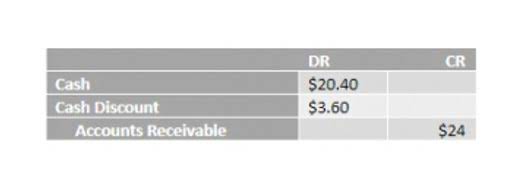
Now, you can look back and see that the bank loan created $20,000 in liabilities. It looks like your business is $17,000 ahead of where it started, but that doesn’t tell the whole story. You also have $20,000 in liabilities, which you’ll have to pay back to the bank with interest. double entry accounting has two equal sides Sole proprietors, freelancers and service-based businesses with very little assets, inventory or liabilities. If you’d rather not have to deal with accounting software at all, there are bookkeeping services like Bench (that’s us), that use the double-entry system by default.

Dependable accounting software will be written/coded to enforce the rule of debits equal to credits. In other words, a transaction will be accepted and processed only if the amount of the debits is equal to the amount of the credits. The scandal came to light in 2001 when Enron filed for bankruptcy, revealing that the company’s financial health was far worse than it had been portraying. The fallout from the scandal was severe, resulting in the dissolution of the company, massive financial losses for investors, and the loss of thousands of jobs.
Who invented double-entry bookkeeping?
Maintaining precise records ensures that a company’s financial health is accurately portrayed, strengthening trust with stakeholders, investors, and regulatory bodies. Additionally, consistent recording facilitates easy audits, enables trend analysis, and supports proactive financial management. As the lifeblood of informed decision-making, accurately recorded transactions are a critical component in the foundation of successful business operations.
- Single-entry accounting involves writing down all of your business’s transactions (revenues, expenses, payroll, etc.) in a single ledger.
- Although double-entry accounting does not prevent errors entirely, it limits the effect any errors have on the overall accounts.
- Ledgers group related accounts together, creating a systematic structure that enables businesses to track and manage their financial activities.
- For the borrowing business, the entries would be a $10,000 credit to “Cash” and an entry of $10,000 in a liability account “Loan Balance”.
- If you’re a small business owner, a single-entry accounting system may work fine for you.
Accuracy is also enhanced by the double-entry system as it becomes possible to build a trial balance to try both the debit and the credit balances. According to the dual aspect principle of accounting, business is a separate independent entity. Double-entry accounting system includes receiving benefits from some sources and giving it to some others. Consistency in accounting principles and practices is paramount for reliable financial reporting. However, the software is recommended as it can automate the process, reducing the risk of errors and saving time.
What is the main difference between double-entry and single-entry accounting?
Double entry accounting maintains balance by ensuring that the total debits equal the total credits for every transaction. For example, when a company purchases inventory for cash, it records an increase in the inventory account (debit) and a decrease in the cash account (credit). The two entries offset each other, maintaining the balance of the financial records. Double-entry accounting is a method of bookkeeping that records financial transactions by creating entries in at least two different accounts.
With the help of accounting software, double-entry accounting becomes even simpler. Double-entry accounting is the standardized method of recording every financial transaction in two different accounts. For each credit entered into a ledger there must also be a corresponding (and equal) debit. These rules provide a framework for accurately recording transactions and maintaining the balance of a company’s financial records. By addressing these common challenges, double-entry accounting provides a reliable and accurate method for tracking an organization’s financial transactions, ensuring its ongoing financial health and stability.
Double Entry Accounting Examples
The debit entry increases the asset balance and the credit entry increases the notes payable liability balance by the same amount. These examples illustrate the complexity of business transactions and how double-entry accounting helps maintain a balanced financial record by simultaneously debiting and crediting the appropriate accounts. By employing a double-entry system, businesses and accountants can confidently manage their finances, ensuring a clear and accurate representation of their financial standing. It is important to correctly classify the accounts and maintain proper records of debits and credits to ensure accurate financial reporting and decision-making. Double-entry accounting is considered more robust and suitable for businesses of all sizes, especially those with complex financial transactions and reporting requirements. It offers greater accuracy, comprehensive financial analysis, and adherence to generally accepted accounting principles and standards.
By following the same procedures over time, you establish a solid foundation for maintaining the integrity of your financial records. It’s important to know that when it comes to debits and credits, there are specific rules to follow. This fundamental principle helps maintain the balance in the financial books, ensuring accuracy and transparency in tracking the flow of resources within a business or organization. Most popular accounting software today uses the double-entry system, often hidden behind a simplified interface, which means you generally don’t have to worry about double-entry unless you want to. Accountants call this the accounting equation, and it’s the foundation of double-entry accounting. If at any point this equation is out of balance, that means the bookkeeper has made a mistake somewhere along the way.


Be the first to post a comment.